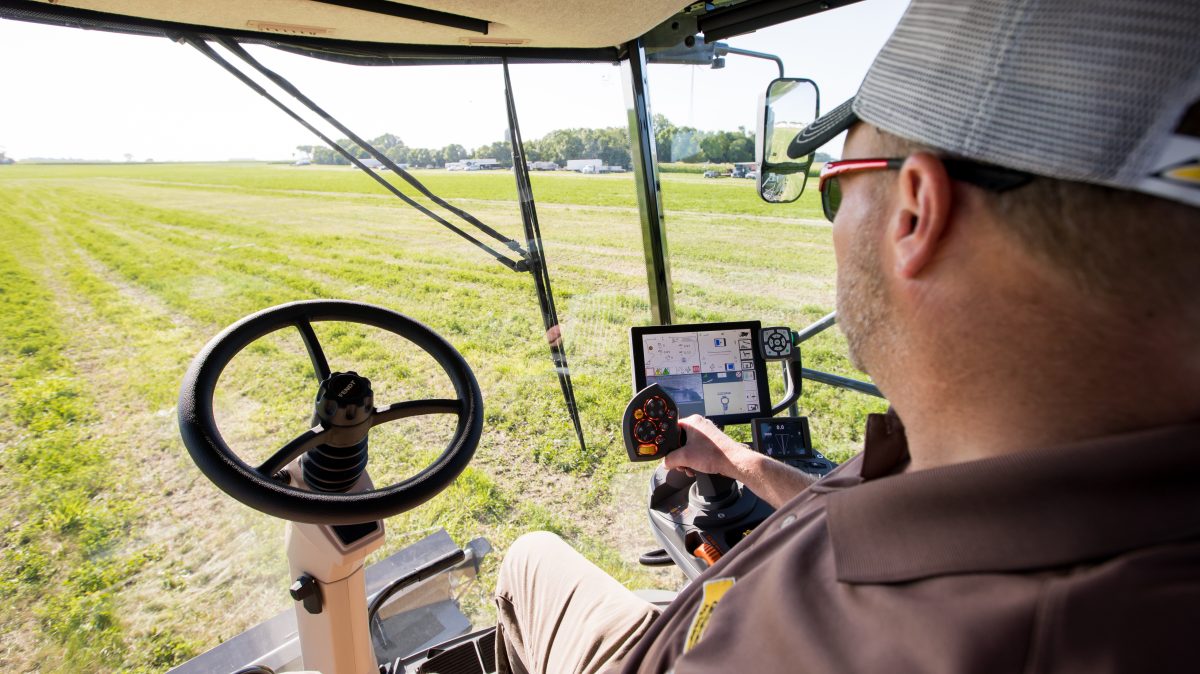AI’s Growing Role in Agriculture
Zippy Duvall
President

photo credit: AFBF
Zippy Duvall
President
Many times, while standing on the very land my father and grandfather cultivated, I reflect on how things have changed. From the adoption of new sustainability practices to our approach to livestock management, our farming methods have evolved significantly. Gone are the days of relying on a walkie-talkie at our hip and a small notebook and pencil tucked into our front pockets. Don't get me wrong – those tools were powerful in their day. But now we have so much technology at our fingertips and at the wheel of our machinery.
Today, new technologies, innovations and sustainability practices are emerging and reshaping the future of agriculture. Now with the integration of Artificial Intelligence the possibilities seem endless. Farmers get a front row seat to the latest innovations as we have the opportunity to embrace these new frontiers in agriculture.
AI is increasingly being woven into the latest technology and farm equipment, offering farmers unprecedented insight and efficiency.
Last week, I had the opportunity to travel to Houston, Texas, for Commodity Classic, to meet with fellow farmers and step into the future of agriculture. Commodity Classic is renowned for providing unparalleled insight and access to the latest advancements in agriculture. And from the moment I stepped onto that trade show floor, I was surrounded by an atmosphere buzzing with excitement and possibilities. A great example of where new frontiers begin in farming with groundbreaking technologies and research.
From drones and robots to new data intake and analysis programs, there was much about the future to be captivated by, especially when it came to this new central theme of Artificial Intelligence. For example, I was able to see how farmers are now able to better analyze crop yield and soil health by having easy access to the soil sampling of their county or having that technology to do it themselves; data that used to involve numerous players and take weeks to gather, now being done almost instantly. This was also the case with new AI-powered crop management software. Farmers can now use platforms remotely to monitor crop health in real-time, able to detect early signs of disease, pests and nutrient deficiencies. Lastly, I had the chance to step into the advancement of machinery by seeing how new equipment uses AI algorithms to autonomously navigate numerous tasks on the farm such as planting, weeding and spraying.
To be honest, I’m not even sure I can fully explain everything I saw and how it works. It was a mix of excitement and uncertainty of the unknown – but there are plenty of things to learn about as we find ways to continue our efforts to make better decisions for our farms. It was also evident that, across the board, AI is not merely a trend in agriculture but a transformative element shaping the future of American agriculture.
For Farm Bureau, we embrace this new frontier through the lens of our policy, set by our grassroots members at our annual convention in January. I’ll call it a cautious approach. Farmers and ranchers see the potential of AI in enhancing productivity and sustainability on the farm, but we recognize the importance of ensuring that AI technologies are deployed ethically and responsibly, safeguarding the interests of farmers and ranchers.
The new AI policy constitutes a commitment to responsible innovation. We as an organization advocate for clear guidelines for the use of AI in agriculture with a focus on transparency, accountability and fairness. From promoting transparency and safety standards to advocating for equitable access and liability frameworks, we want to chart a course that helps farmers embrace new opportunities while protecting their data and livelihoods.
AI is increasingly being woven into the latest technology and farm equipment, offering farmers unprecedented insight and efficiency. However, as AI’s integration grows, so too does the need for thoughtful policy to govern its use.
The journey ahead in agriculture will be filled with many exciting innovations as we strive to meet the challenges of feeding a rapidly growing population. We embrace this new frontier with appropriate caution, always looking before we leap, to ensure we also maintain the vibrancy of our farms, ranches and rural communities.
